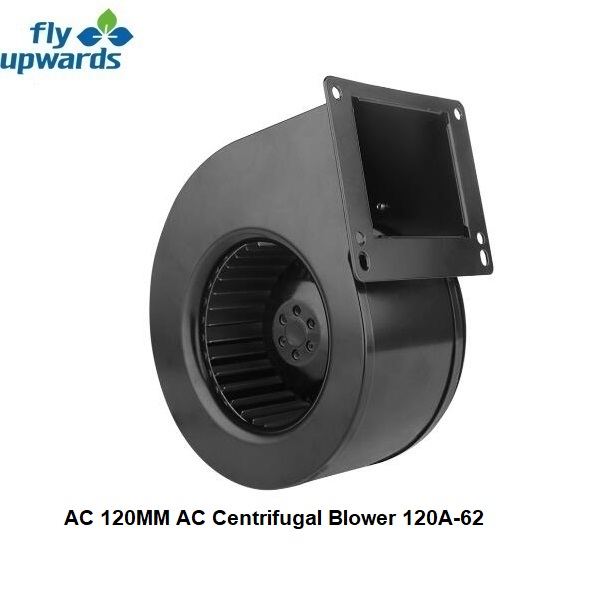Understanding and Mitigating Noise Levels of AC Forward Curved Fans
2024-05-21
Air conditioning (AC) systems are essential for maintaining comfort in both residential and commercial spaces. A critical component of these systems is the fan, which circulates air throughout the environment. Among the various types of fans, the forward curved fan is widely used due to its efficiency and compact size. However, like all mechanical systems, these fans generate noise, which can affect comfort and productivity. In this blog, we'll explore the typical noise levels associated with AC forward curved fans and discuss effective strategies for noise mitigation.
Typical Noise Levels of AC Forward Curved Fans
The noise generated by AC forward curved fans can vary significantly depending on several factors such as fan size, speed, and installation environment. Here’s a general overview:
1. Residential Units: Smaller forward curved fans used in residential AC units typically produce noise levels ranging from 40 to 60 decibels (dB). This range is comparable to the sound of a normal conversation or background music.
2. Commercial Units: Larger units used in commercial settings can produce noise levels between 60 and 80 dB. At the higher end, this is similar to the noise of a busy office or street traffic.
3. Industrial Units: Industrial AC systems with even larger forward curved fans may exceed 80 dB, reaching levels comparable to heavy traffic or a loud restaurant.
These noise levels, especially in commercial and industrial settings, can become a source of distraction and discomfort if not properly managed.
Factors Contributing to Noise Generation
Several factors influence the noise levels produced by forward curved fans:
- Fan Speed: Higher speeds generally result in higher noise levels due to increased air turbulence and motor vibrations.
- Blade Design: The shape and material of the fan blades can significantly impact noise generation. Forward curved blades, while efficient, tend to produce more noise than backward curved or axial blades.
- Installation Quality: Poor installation, including misalignment and insufficient mounting, can increase noise due to vibrations and resonance.
- Airflow Restrictions: Obstructions or narrow ducts can cause turbulent airflow, leading to higher noise levels.
Strategies for Noise Mitigation
Mitigating noise from forward curved fans involves addressing the sources of noise and enhancing the system’s overall design. Here are some effective strategies:
1. Proper Installation and Maintenance
Ensuring that the fan is correctly installed and regularly maintained is crucial. This includes:
- Alignment and Balance: Proper alignment of the fan and ensuring it is balanced can minimize vibrations.
- Secure Mounting: Using anti-vibration mounts can reduce noise transmission to surrounding structures.
- Regular Cleaning: Keeping the fan and ducts clean can prevent airflow obstructions and reduce noise.
2. Using Acoustic Insulation
Acoustic insulation materials can be used to line the ducts and housing of the fan. These materials absorb sound waves, reducing the overall noise levels. Options include:
- Duct Liners: Specialized liners that absorb sound within the ductwork.
- Fan Enclosures: Enclosing the fan in an acoustic housing can significantly reduce noise emission.
3. Fan Speed Control
Implementing variable speed controls can help in adjusting the fan speed according to the cooling demand, thereby reducing noise during lower demand periods. Lower speeds typically result in quieter operation.
4. Blade Design Optimization
Choosing fans with optimized blade designs can reduce noise. Some manufacturers offer forward curved fans with blades designed to minimize noise while maintaining efficiency.
5. Sound Barriers
In commercial and industrial settings, installing sound barriers or baffles can help in containing and reducing noise. These barriers can be strategically placed to block sound paths and absorb noise.
6. Use of Noise-Canceling Technology
Advances in technology have led to the development of active noise-canceling systems for HVAC applications. These systems use microphones and speakers to detect and counteract noise with anti-noise signals.
Conclusion
While AC forward curved fans are effective in providing efficient airflow, managing their noise levels is essential for maintaining a comfortable and productive environment. By understanding the factors that contribute to noise and implementing targeted mitigation strategies, it is possible to significantly reduce the noise impact of these fans. Whether through proper installation, the use of acoustic materials, optimized blade designs, or advanced noise-canceling technology, there are various ways to achieve quieter operation, enhancing overall comfort and satisfaction.



